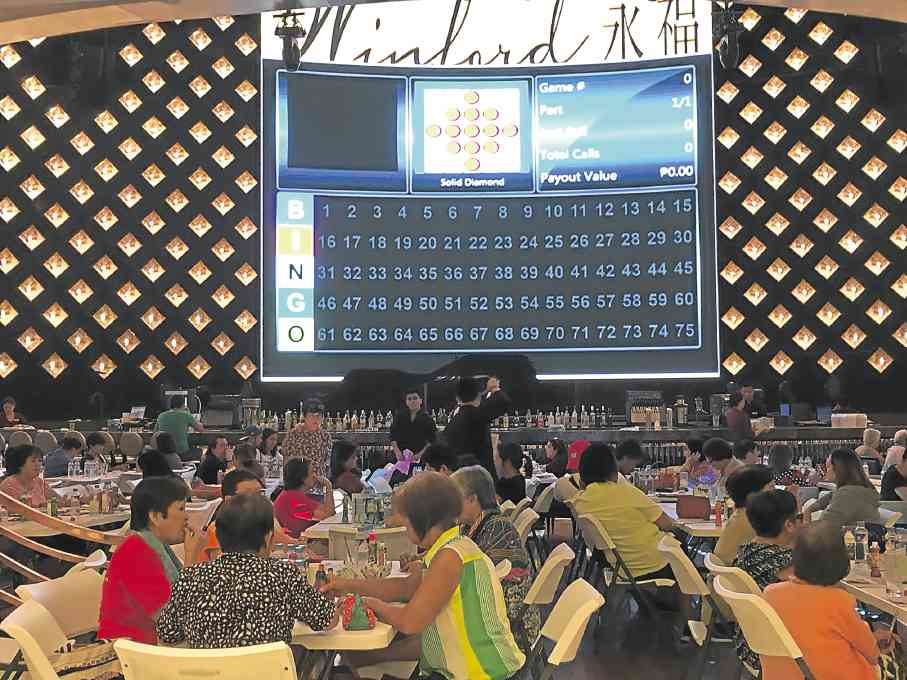This year of the Fire Rooster is said to be an auspicious year for gaming. To take advantage of this, publicly listed MJC Investments Corp. (MJIC)—a partnership between Asia’s oldest horse racing club Manila Jockey Club Inc. (MJC) and a Hong Kong-based investor group—will enter the tourism-gaming action, holding fort in Greater Chinatown.
Sometime in April, Winford Hotel & Casino will have a grand opening at the San Lazaro Tourism and Business Park in Sta. Cruz, Manila, occupying part of the land where the old Manila Jockey horse racing track has been redeveloped into an urban oasis. The new entertainment complex is already partially operational.
Despite a much smaller footprint than the five-star hotels operated by international hotel chains and its massive peers along the Manila Bay Area, this tastefully designed 22-story deluxe boutique hotel-casino complex required around P7 billion in investments, more than the P6.5 billion that the SM group had to pay for the sprawling Conrad Manila.
How can a 128-room casino-hotel cost this much? MJIC president and CEO Alfonso “Boy” Reyno Jr., a prominent Ilocano businessman from Cagayan Valley and former Defense Undersecretary and lawmaker, gave Inquirer a preview of the newest gaming hub in town.
Reyno isn’t one who will scrimp on aesthetics. His group tapped Gettys Interior Design, the same team that worked on Peninsula Hong Kong’s most recent renovation, to make sure that what will come out won’t disappoint discerning holiday-makers and casino-goers.
Winford Hotel, with its reflective exterior golden glass walls reminiscent of gaming hubs in Macau, was built by renowned architect Jose Pedro Recio of Rchitects Inc., while structural works were done by Sy Inc. & Associates Structural Engineers.
Reyno shows with pride, for instance, the intricate circular patterns on the hotel’s marble walls. MJIC could have been content with plain white marble, he says, but Gettys had chosen a more elaborate, ergo more expensive, design. The pillars leading to the main ballroom are adorned with capiz (mother of pearl) sourced from Cebu and coated with shimmering gold.
Winford is also one of the few hotels in the metropolis with a heated swimming pool, a good proposition to urban dwellers who like to spend some weekends on a “staycation” mode.
The hotel’s guest rooms are sleek and cozy. Published rate for a junior suite is around P7,000 to P8,000 per night, Reyno says. A quick check at online booking sites show Winford’s deluxe king room priced at around P3,300 a night and an executive suite at around P4,400, including taxes and breakfast.
For big events, Winford has an elegant and spacious ballroom that can accommodate 800 guests on a sit-down dining style.
SM Kenko Sauna, pitched as the first authentic Japanese health spa in this part of the world, has set up shop here. For Chinese fine dining, Choi Garden is also available.
The complex has a three-level entertainment and gaming area, fitness center, coffee shop and dining area, retail outlets and a seven-level parking structure that can accommodate 600 cars.
The gaming component of Winford is also one reason why building such a relatively small hotel had cost that much to build. The hotel has around 7,500 square meters (sq m) of gaming space with 600-700 gaming machines sourced from the US and Australia and 159 gaming tables. A single slot machine, for instance, costs between $20,000 and $30,000.
The gaming component of Winford is a joint venture between MJIC and the state-owned Philippine Amusement and Gaming Corp. (Pagcor). MJIC built and furnished the gaming facility, which is operated by Pagcor, in exchange for a 40 percent share in earnings over a 10-year period.
Although far from Metro Manila’s future Las Vegas strip along the Bay Area, Reyno sees Winford’s proximity to the heart of Binondo—the hub of Chinoys as well as foreign Chinese businessmen—as a distinct advantage. There’s a dearth of deluxe accommodations in this area notwithstanding the critical mass of foreign traders and tourists drawn to Chinatown, he says.
He also notes many of those who feel like unwinding in a casino, whether from the mass market or the VIP segment, won’t likely choose to navigate Metro Manila’s notorious gridlock just to try their winning streak if there’s a gaming complex right within the neighborhood.
About 5.39 million foreign tourists visited the Philippines from January to November last year, 12 percent higher than the level a year ago, mostly from Korea (1.33 million), United States (771,849), China (630,327) and Japan (491,261). This 11-month figure exceeded the full-year 2015 tourist arrivals of 5.36 million.
This year, the Department of Tourism expects the figure to break the seven-million milestone.
Property consulting firm Colliers International sees more Chinese visitors flocking to the Philippines following President Duterte’s visit to China in October last year, during which the Chinese government lifted negative travel advisories against the Philippines. Based on figures from the Philippine embassy in China, the number of Chinese nationals applying for tourist visas to the Philippines has surged to 1,400 daily in the fourth quarter of 2016 from only 400 daily in the previous quarter.
MJIC has also well positioned itself to ride on a more thriving Chinatown.
The San Lazaro Tourism and Business Park—previously one of the most depressed parts of Manila—has been transformed into an urban complex that hosts a residential condominium project jointly developed by Ayala Land and MJC, a business process outsourcing complex, and the SM San Lazaro.
“All past and present mayors of Manila liked what we did here because there was urban renewal,” Reyno says.
After completing the gaming complex, Reyno has other big plans for the remaining land in San Lazaro and the other assets of the Manila Jockey Club, which is celebrating its 150th anniversary this year.


